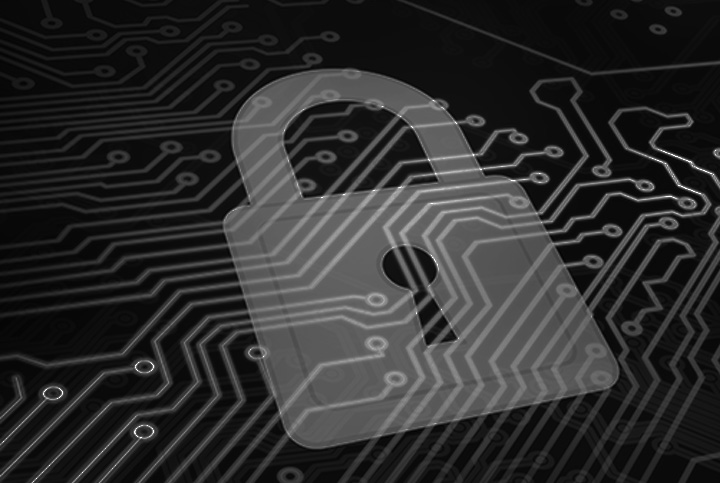What is an Asset
An asset is anything of assigned worth. In a modern business context, a technology asset takes into account physical hardware, software, systems access (XaaS), or even data that the organisation perceives as valuable.
In this article, we’ll be examining how these assets are identified, indexed, and managed, and explore the evolution of methods and solutions to achieve these ends.
Asset Management & Discovery Defined
Information Technology Asset Management (ITAM) is the process organisations follow to design, deploy, maintain, manage, and dispose of asset groups in accordance with their interpretation and implementation of the Asset Management Lifecycle.

Asset Discovery is the discipline logically stemming from Asset Management. As organisations have acquired more and more assets, particularly post-Industrial Revolution, ledgers and more formalised accounts came from the need to be more methodical, and so too, the processes to identify and logically classify assets. In the context of information technology, Asset Discovery can be defined as the process of identifying both the active and passive assets connected to a given corporate network, and recording the identified parameters, and assigning a unique identifier for each asset.
The Rationale for Asset Management and Discovery
The need to know what assets a company has and how they are being used is inherently obvious. The reason for formalising and standardising an organisation’s approach is to maximise the benefits an asset can provide, while optimising the risks associated with introducing any additional asset to a corporate network. Ultimately, asking if the reward is worth the effort and risk.
There are various financial aspects that must be taken into account when looking at Asset Management. From initial purchase, tracking asset depreciation, maintenance and renewal costs, there are CAPEX/OPEX considerations. Further, when we look at operational excellence, optimising the respective and collective use of each asset and protecting each, and by proxy, the larger network, all can be seen as also impacting financial considerations; none of which are possible without actively and accurately managing assets.
“You can’t protect what you can’t see. If you don’t know about it, how can you protect it? CyAmast was designed to not only ‘see’ the assets on a network, but ‘understand’ them too.”
– Adam de Jong, CEO of CyAmast
If it initially seems like it may be a daunting undertaking to go through these processes, it can be; particularly for those using legacy solutions or the more manual processes we’ll be examining shortly. Nevertheless, the business outcomes are worthwhile:
- Easier asset lifecycle management
- Mitigation of security risks through more conscientious asset identification and management
- Updates and configuration management less likely to be neglected
- Identifying issues that may lead to data exfiltration, licensing, or compliance implications
- Diagnosis of malfunctions or other unwanted or wasteful device activities
- Identification of unauthorised software that may contain malware
- Identification of unauthorised devices or potentially misconfigured/infected BYOD
History & Evolution Of Asset Management & Discovery
Historically in ICT, spreadsheets accompanied by the physical process or walking and searching rooms covered by the corporate network, and assigning physical Asset ID tags, was the standard process for Asset Discovery. Corporate IT policy was that unauthorised relocation of assets was forbidden as the first step in minimising Asset Management headaches. This relatively simplistic methodology was (barely) sufficient when dealing with desktops, servers, and networking equipment that was largely ‘immovable’. Surprisingly, these methods of ‘run by Excel’ are still the tools of choice for many organisations, even in the age of mobile computing with initiatives like BYOD and of course the rapid adoption of the Internet of Things (IoT). These much more dynamic lists of assets and their fundamentally shifting deployment need more elegant and automated solutions to keep pace with change. Fortunately, there are better options that automate facets of Asset Discovery and Asset Management to keep a handle on the sheer number of connected devices in the modern corporate network.
With the growth in asset-count within technology, we needed a systematised way to ‘look’ for us. During the late 1990s and early 2000s, we saw the emergence of network discovery tools as a precursor to automated asset management. These simple systems create organised, hierarchical catalogues through network scans using the simple ICMP protocol (like the Ping command) and/or manual assignment in the register. Of course, as requirements have evolved, we’ve seen the tools for Asset Management also evolve, albeit at a slower pace.
These tools, while lacking in sophistication, mean at least we didn’t need to lean on completely manual processes. The typical solution analyses asset clusters and identifies their device type and their network parameters like IP on the network, ports in use, and MAC Addresses, but little more.
New Breed Attempts & Shortcomings
Many of the newer solutions on the market do provide value. Understanding the overall architecture of complex networks, identifying extraneous devices and power waste, and even providing some level of lift in security through more effective BYOD assets scanning, are all beneficial.
There are a host of benefits that come with better asset discovery and management. Modern more ‘automated’ tools are able to identify by looking at the logs to uncover the use of unsanctioned devices or unauthorised/licensed software that could well provide a vector for a compromise in the network through malware. These tools still require substantial resources just to provide another ‘pane of glass’ and ultimately require human intervention to action any identified insights.
So, despite the evolution of these approaches and the tools, frustrations still abound. These largely stem from the fact that although we see a shift from a manual process to an automated one, it’s still an analogous process, just done by network protocol scans rather than shoes & ID stickers. Some solutions leverage network traffic logs to pull information from and provide a basic aggregate view into the corporate networks assets, providing base-level understanding of the network as a whole, and individual assets. The missing part of the equation is the more nuanced aspect of device context.
The Next Evolution – CyAmast and its Benefits
Instead of having to actively catalogue every device and manually map relationships between assets and business services, CyAmast is able to passively discover all OT and IoT assets on your network, including agentless assets like IoT devices. This means that our approach doesn’t disturb your network because it’s not actually interacting with it.
“The CyAmast solution is very different. The solutions on the market are inspecting everything, and this can slow and even crash assets on a network. We aren’t filtering the water and interfering with the flow of the river, we’re standing on the shore and watching the flow. And we can see it all, or zoom in to the details of every ripple, every eddy whenever we like.”
– Hassan Habibi, CTO of Cyamast
Our proprietary technology means we can get a full picture of every asset, whether managed or unmanaged, BYOD, or IoT, and additionally see the context of each asset through its interactions with other resources on the network. Coupled with our Federated Learning engine, any anomalous behaviours for that specific device that could indicate compromise or identify possible malfunction, can be dealt with immediately. It can be quarantined or taken offline entirely, even before issues arise. By looking at asset profiles that are built for every unique asset, we can look for deviations from good, or normal, rather than just the ‘bad’, and either automatically (or manually) take action.
So the future of Asset Discovery and Asset monitoring is automatic and more nuanced insights. By deploying CyAmast, you gain unprecedented visibility into your networks, and know that every device no matter its function or how fleeting its time on the network, is being monitored and profiled without impacting performance, and without requiring huge spend on additional infrastructure.


